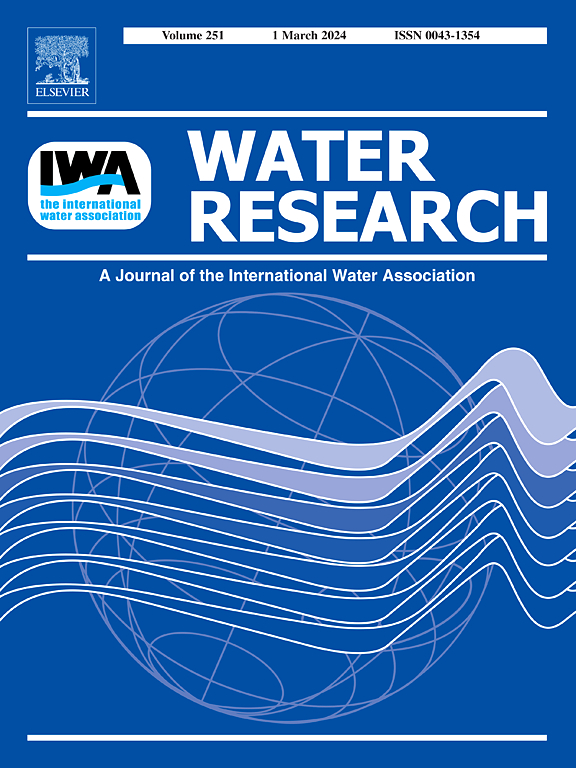Investigation of the ecological roles of the plastisphere microbiome in metal-contaminated river sediments: elucidation of their metabolic versatilities for plastics mineralization and metal resistance
IF 12.4
1区 环境科学与生态学
Q1 ENGINEERING, ENVIRONMENTAL
引用次数: 0
Abstract
Both plastics and heavy metal(loid)s (HMs) are ubiquitous environmental contaminants, and their frequent interactions in aquatic environments are observed globally. These interactions could result in adsorption of HMs onto plastics, thereby altering the environmental behavior of both contaminants. The change of physicochemical property of plastics surfaces, due to HM adsorption, inevitably impacts the plastisphere microbiome, as well as the fate of plastics in the environment. However, our understanding of how plastisphere microbiomes respond to HMs stress, and the subsequent impacts on the fate of plastics and HMs, remain in its infancy. The current study identified keystone taxa of the plastisphere microbiome and identified their ecological roles in HM metabolism. Members of Mycobacterium were identified as the keystone taxa in the HM contaminated plastisphere. Metagenomic binning and pangenome analysis demonstrated that Mycobacterium encoded essential genes for plastics biodegradation and HM resistance. Pure isolates of Mycobacterium further confirmed that the bacteria can mineralize plastics under arsenic exposure, with plastics biodegradation rates remaining unaffected by environmentally relevant As concentrations (up to 0.5 mM). In summary, the metabolic potentials of HM detoxification as well as the mineralization of plastics by the keystone taxa of the plastisphere microbiome may play important environmental service to promote the bioremediation of the co-contamination of HMs and plastics.


金属污染河流沉积物中塑料球微生物群的生态作用研究:阐明它们在塑料矿化和金属抗性方面的代谢多样性
塑料和重金属都是普遍存在的环境污染物,它们在全球水生环境中频繁相互作用。这些相互作用可能导致HMs吸附到塑料上,从而改变这两种污染物的环境行为。塑料表面的物理化学性质的变化,由于HM的吸附,不可避免地影响塑料球微生物群,以及塑料在环境中的命运。然而,我们对塑料球微生物群如何应对塑料微粒的压力,以及随后对塑料和塑料微粒命运的影响的理解仍处于起步阶段。本研究确定了塑料球微生物组的关键分类群,并确定了它们在HM代谢中的生态作用。分枝杆菌的成员被确定为HM污染塑料圈的关键分类群。宏基因组分析和泛基因组分析表明,分枝杆菌编码塑料生物降解和HM抗性必需基因。分支杆菌的纯分离进一步证实,该细菌可以在砷暴露下矿化塑料,塑料的生物降解率不受环境相关砷浓度(高达0.5 mM)的影响。综上所述,塑料圈微生物组的关键类群对塑料脱毒和矿化的代谢潜力可能对促进塑料和塑料共污染的生物修复具有重要的环境服务作用。
本文章由计算机程序翻译,如有差异,请以英文原文为准。
求助全文
约1分钟内获得全文
求助全文
来源期刊

Water Research
环境科学-工程:环境
CiteScore
20.80
自引率
9.40%
发文量
1307
审稿时长
38 days
期刊介绍:
Water Research, along with its open access companion journal Water Research X, serves as a platform for publishing original research papers covering various aspects of the science and technology related to the anthropogenic water cycle, water quality, and its management worldwide. The audience targeted by the journal comprises biologists, chemical engineers, chemists, civil engineers, environmental engineers, limnologists, and microbiologists. The scope of the journal include:
•Treatment processes for water and wastewaters (municipal, agricultural, industrial, and on-site treatment), including resource recovery and residuals management;
•Urban hydrology including sewer systems, stormwater management, and green infrastructure;
•Drinking water treatment and distribution;
•Potable and non-potable water reuse;
•Sanitation, public health, and risk assessment;
•Anaerobic digestion, solid and hazardous waste management, including source characterization and the effects and control of leachates and gaseous emissions;
•Contaminants (chemical, microbial, anthropogenic particles such as nanoparticles or microplastics) and related water quality sensing, monitoring, fate, and assessment;
•Anthropogenic impacts on inland, tidal, coastal and urban waters, focusing on surface and ground waters, and point and non-point sources of pollution;
•Environmental restoration, linked to surface water, groundwater and groundwater remediation;
•Analysis of the interfaces between sediments and water, and between water and atmosphere, focusing specifically on anthropogenic impacts;
•Mathematical modelling, systems analysis, machine learning, and beneficial use of big data related to the anthropogenic water cycle;
•Socio-economic, policy, and regulations studies.
 求助内容:
求助内容: 应助结果提醒方式:
应助结果提醒方式:


